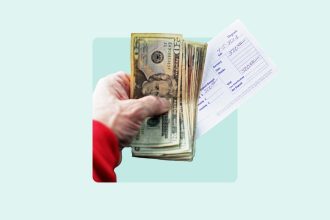Key takeaways
- A principal-only car payment is an extra payment that is applied to your auto loan balance when there is no interest due.
- Lenders may not automatically apply extra payments to the principal, so you might need to make a specific request.
- Making principal-only payments can help you pay off your auto loan faster and save money on interest.
If it’s possible for your budget, making a principal-only payment on your car loan is generally a good idea. Extra payments can help you build equity, save on interest and pay off your auto loan faster.
Make sure you allocate extra payments in a way that saves you the most money. If your lender doesn’t apply extra payments to your principal, you won’t benefit as much — but there’s nothing wrong with getting ahead of your monthly car payments, which could also help you reduce your overall costs.
What is a principal-only payment?
A principal-only payment reduces the total amount you owe and makes it so less interest accrues between your additional payment and your regular monthly payment. When you pay more than the minimum monthly payment, you will need to specify how you want extra payments to be applied.
Every lender handles additional payments differently. Some lenders may apply the payment to the principal automatically, while other lenders may apply extra funds to next month’s payment, which won’t reduce your principal. If you aren’t sure what your lender’s policy is, review your loan contract or reach out to customer support to determine how additional payments are applied.
What is the principal of a loan?
For an auto loan, the principal is usually the out-the-door (OTD) price along with any other fees or taxes you included in your financing agreement.
How to make a principal-only payment
Every lender will have a different procedure for making a principal-only payment, but you can usually follow a few basic steps to complete the process.
- Check for prepayment penalties. Some lenders may charge a prepayment penalty, which penalizes you for making extra payments or paying off the loan early.
- Notify your lender. This may just be a box you check online or in an app. However, your lender may require you to make this request in writing or by calling a rep.
- Apply your payment. Once you know the process for extra loan payments, apply any extra funds you have to your loan principal.
- Contact your lender with any questions. Contact customer service if you have questions. They should be able to tell you how or walk through the process with you.
If your lender doesn’t offer the option to make a principal-only payment, you may still be able to pay down your loan faster by refinancing your auto loan or using other payment options.
Benefits of making extra principal payments
A smaller principal means less interest and a faster payoff date. Every payment that goes solely toward your principal also builds equity in your car, which reduces the risk of owing more than your car is worth — known as an upside-down car loan.
Since the main benefit is saving money over the long term, you can use an early payoff calculator to see how additional monthly payments will reduce the total interest paid and the amount of time spent paying the loan.
Take a $42,000 auto loan with a 6.35 percent APR and a 60-month term. By paying even a little extra each month, you can save hundreds in interest and cut multiple months off of your loan term.
| Additional monthly principal-only payment | Total interest paid | Total cost-savings | Loan term reduction |
|---|---|---|---|
| $0 | $7,130 | $0 | 0 months |
| $50 | $6,638 | $492 | 4 months |
| $100 | $6,211 | $919 | 7 months |
Tips to pay down your car loan faster
If you can’t make principal-only payments, you may still be able to pay off your car loan ahead of schedule.
- Schedule biweekly payments: You may not have the money to make a full payment twice a month, but making a half payment every other week can reduce the overall interest paid.
- Pay more than your minimum. Similarly, you may be able to round up your payments to the nearest hundred. Every little bit helps when it comes to paying down the loan faster.
- Make extra lump-sum payments: If you get a bonus or tax refund, you can put it towards your car loan if it wouldn’t be better spent elsewhere.
Does paying down the principal on a car loan affect your credit?
It can. Early repayment may impact your credit mix, your payment history and your debt-to-income ratio before you decide to pay the loan off early.
Bottom line
Making principal-only payments is an effective way to save money and manage your auto loan. Contact your lender to find out if it applies payments directly to the principal. If it is an option, ensure you know how to notify your lender when you do.
Remember that every bit counts when it comes to paying down your loan. Adding any extra payment to your regular monthly payment can help you pay off your loan faster.
Why we ask for feedback
Your feedback helps us improve our content and services. It takes less than a minute to
complete.
Your responses are anonymous and will only be used for improving our website.
Help us improve our content
Read the full article here
















